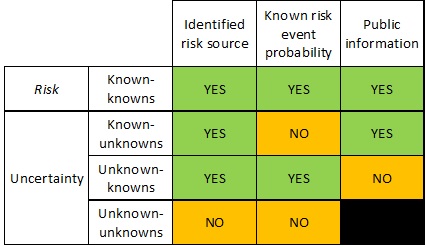Multi project management
A project management is difficult because of costs and schedules. A multi project management is even harder and if the different projects have different topics, then it becomes a challenge to ensure the planned schedules while complying with the costs. And the communication with the clients and the colleagues become pretty harsh. You have to be careful about information you can share or not while staying meaningful and accurate.
Multiple Project Management is composed of many projects related together. MPM is often understood as just many single projects that you have to achieve one by one reaching each deliverables planned. Actually, MPM is located between Program Management and Portfolio Management but it is different. That is more than a Program but less than a Portfolio.
In multiple project management, I will study the management of the schedules. Most of multiple projects are seen by the manager as a big project. What about a Program Management point of view? Schedules and costs? Program Management looks farther. This approach can solve problems which cannot be solved by a project point of view. The management of different critical paths will be different with benefits goals and not deliverables goals. With this point of view, a multiple project or a complex project will aim short term deliverables but also long term benefits.
Contents |
Background
First, I have to explain the difference between program management and project management. The best way to explain it can be this sentence: Project managers manage projects and program managers manage a portfolio of projects. So with this difference, we understand that a Multiple Projects Management (MPM) can be approached with a Project Management point of view or with a Program Management point of view.If we consider a MPM just as a big project then it is a Project Management point of view. However, if a MPM is a portfolio of projects then it is the Program point of view.
In a MPM, actually, the managers just look about the schedules and the costs. Here, the aim is only to finish the MPM and do not look farther. It is all about the deliverables and they forget the benefits. Moreover, most of managers think of MPM simply as the management of a list of individual projects, rather than a complex entity. So there are 2 steps before reaching a Program Management point of view.
Finally, managers think about multi-project management and program management as the same. But it is a separate concept: program management is a special case of multi-project management that has a single goal or purpose (for instance putting a man on the moon), whereas multi-project management generally treats the case of multiple independent goals. A program can be seen as a family of related projects and MPM either.
With this description of MPM and Program Management, let’s see how it can be related and used to solve uncertainty of schedules and why a MPM has not just deliverables goals but benefits goals too.
Uncertainty of multiple plannings management
From early phases, MPM should be defined: planning, cost and time. But there is other information, unknown, which need to be recorded. Uncertainty can be defined as the difference between the information required to make a decision and the available information.
There are two concepts attached to uncertainty:
- Predictability, since the future is not known, and the past can be an invaluable guide.
- Complexity, since it is costly in terms of time, money and other resources.
Here, we can easily see the difficulty about scheduling because of MPM complexity. However, the predictability is the same for MPM or a single project.
Risk is the probability of the occurrence of a risk event given its risk source. To define risk, two definitions should be considered:
- Risk source, as an underlying state of affairs
- Risk event, as something given due to the underlying state of affairs
When the needs of the client and the manager are not met, a risk event can be created. In addition, modifying these need during the project, or having a weak communication between the parts, can create the risk event. Risks event can be solved by a Program Management approach (Planning in Program Management).
In risk situations, there are parameters controlled by probability, known by the decision maker. However, in uncertainty situations, parameters are uncertain and no information about probabilities is known. It is clear that a manager do not have precise information, especially when making long-term planning as in MPM. But it is possible to determine some parameters from experience or statistical data. The uniqueness of a MPM leads to a high degree of uncertainty especially in planning because of the interaction between all the projects. Therefore, project managers must lean on risk management to identify, analyse, monitor and report risks.
The project risk management uses four basic concepts to help identify the type of risk:
- Known-knowns: the risks have been identified and a probability can be assigned.
- Known-unknowns: the risks have been identified but a probability cannot be assigned to them.
- Unknown-knowns: the risks are the ones identified by someone who associates probability to them, but decides to hide that information.
- Unknown-unknowns: the risks have not been identified.
This being said, the purpose of risk management is to help eliminate the unknown-unknowns and decrease uncertainty by having all risks known-knowns. This way, the complexity will be minimized and also the predictability, to some extent. For MPM, the complexity for the schedules will decrease even more than for a single project because the complexity is not linear. A small problem in one project can create one problem in each others projects then the level complexity becomes unsolvable for the schedules. Taking a Program Management point of view, we do not have multiple goals but we have one goal with multiple purposes and we will see how it can solve the risk problems.
